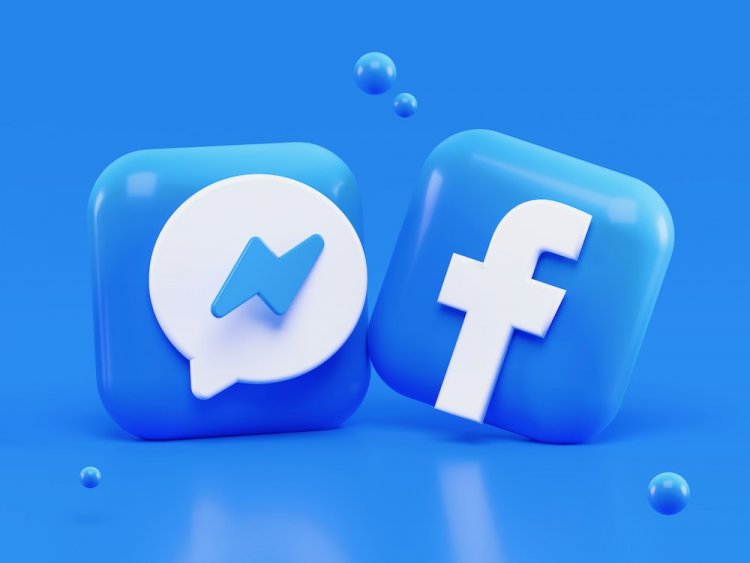Facebook Marketing: Reach Your Target Audience & Expand Your Business
Maximize your reach and grow your business with Facebook Marketing. Learn how to effectively target your audience, create engaging ads, and achieve your marketing goals. Get started today!

Facebook is one of the largest social media platforms, with over 3 billion monthly active users. As a business, you can tap into this vast audience to reach and engage with your target market, drive more sales, and expand your business. This guide will cover the essential subtopics to help you get started with Facebook marketing.
Understanding Target Audience and Defining Your Goals
Understanding your target audience and defining your goals are important first steps in creating effective Facebook ad campaigns.
- Target audience: Understanding your target audience helps you create ads that are relevant and appealing to the people you want to reach. Consider factors such as age, gender, location, interests, and behavior. Use Facebook's targeting options to reach your desired audience.
- Goals: Defining your goals helps you determine what you want to achieve with your Facebook ads and how you will measure success. Examples of goals include increasing website traffic, boosting brand awareness, driving sales, or collecting leads. Having clear goals in mind allows you to create ads that are aligned with your desired outcome and track your progress towards reaching those goals.
By taking the time to understand your target audience and define your goals, you can create more effective Facebook ad campaigns that deliver results.
Setting up and Optimizing a Facebook Business Page
Setting up and optimizing a Facebook Business Page is a crucial step in establishing your online presence on the platform and reaching a wider audience. The following are key steps in setting up and optimizing a Facebook Business Page:
- Choose a page type: Select the type of business page you want to create, such as a local business, brand, or public figure.
- Add your business information: Provide your business name, address, contact information, and other relevant details.
- Upload a profile picture and cover photo: Choose images that represent your business and are visually appealing to your audience.
- Create a call-to-action (CTA) button: Encourage people to take a specific action, such as making a purchase or visiting your website.
- Post regularly: Share relevant and valuable content with your audience, such as news, promotions, and updates.
- Engage with your audience: Respond to comments and messages, and actively participate in conversations to build a relationship with your followers.
- Use Facebook Insights: Track and analyze your page's performance and make data-driven decisions to improve your results.
By following these steps and regularly updating your page, you can optimize your Facebook Business Page for maximum reach and engagement with your target audience.
Creating Engaging and Relevant Content
To keep your audience engaged and interested, it's important to create relevant and engaging content. Share blog posts, videos, and images that showcase your products or services and offer value to your audience. Here are some key points to consider when creating content for your ads:
- Know your audience: Understanding your target audience and what interests and motivates them is essential to creating content that resonates with them.
- Be relevant: The content of your ad should be relevant to the products or services you are promoting. It should also be relevant to the current context and needs of your target audience.
- Be creative: To stand out in a crowded online environment, you need to be creative with your content. Use eye-catching visuals and engaging copy to grab people's attention.
- Offer value: Your content should provide value to your target audience, whether that be through education, entertainment, or inspiration.
- Keep it simple: Keep your content concise and to the point. Avoid using jargon or complex language that might confuse or alienate potential customers.
By creating engaging and relevant content, you'll increase the likelihood that people will engage with your ads, remember your brand, and take the desired action, such as making a purchase or visiting your website.
Leveraging Facebook Ad Targeting Options
Facebook provides various targeting options to reach your desired audience for your ads. Some of these options include:
- Demographic targeting: target based on age, gender, education, job title, etc.
- Location targeting: target based on country, state, city, or even zip code.
- Interest targeting: target based on interests such as sports, travel, technology, etc.
- Behavioral targeting: target based on consumer behavior such as purchase history, online behavior, etc.
- Connections targeting: target people who are connected to your Facebook Page, app or event.
- Custom Audiences: target people who have already interacted with your business, such as website visitors or email subscribers.
By combining these options, you can create a highly targeted audience for your ads, increasing their effectiveness and reach.
Measuring and Analyzing Your Results
To track your success, it's important to measure and analyze your results. Use Facebook's built-in analytics tools to track page views, engagement, and conversions.
To measure and analyze the results of your Facebook ad campaigns, you can use the following metrics:
- Impressions: the number of times your ad was shown.
- Reach: the number of unique people who saw your ad.
- Click-Through Rate (CTR): the number of clicks your ad received divided by the number of impressions.
- Cost per Click (CPC): the average cost you pay for each click on your ad.
- Conversion rate: the number of people who took a desired action (such as making a purchase or filling out a form) divided by the number of clicks.
- Return on Ad Spend (ROAS): the return on investment for your ad spend, calculated by dividing the revenue generated by the cost of the ad campaign.
Consider setting up conversion tracking to see how many sales or lead form submissions were generated from your Facebook marketing efforts. This information can help you adjust your strategy and improve your results over time.
Best Practices for Using Facebook Groups and Messenger
In addition to your Facebook Business Page, consider using Facebook Groups and Messenger to connect with your audience. Facebook Groups are a great way to build a community around your brand and engage with your customers.
Here are some best practices for using Facebook Groups and Messenger effectively:
- Define the purpose of your group: Clearly state the goal and focus of your group in the group description to attract the right members and keep the group on-topic.
- Foster engagement: Encourage members to participate in discussions and share content. Respond to comments and questions to keep the conversation going.
- Promote your group: Share your group with your existing network, and consider running targeted ads to reach new members.
- Set group rules: Establish clear guidelines for behavior to ensure a positive and productive environment for all members.
- Use Messenger for personalized communication: Use Messenger to have one-on-one conversations with members and provide customer support.
- Utilize Messenger features: Make use of Messenger's features, such as chatbots, to automate repetitive tasks and provide a better user experience.
- Encourage feedback: Ask members for feedback on your group and how you can improve it. This can also help increase engagement and keep members coming back.
- Keep content fresh: Regularly post new and relevant content to keep your group active and engaged.
By following these best practices, you can effectively use Facebook Groups and Messenger to build and engage your community and reach your business goals.
Integrating Facebook Marketing with Other Marketing Channels
Integrating Facebook marketing with other marketing channels can help to maximize the impact of your overall marketing strategy and reach your desired audience more effectively. Some ways to integrate Facebook marketing with other channels include:
- Cross-promotion: Promote your Facebook page through other marketing channels, such as email marketing, and vice versa.
- Coordinated campaigns: Plan and launch synchronized campaigns across multiple channels, such as Facebook and Google AdWords, to reach your target audience from multiple angles.
- Shared audience: Create custom audiences based on data from other channels, such as email subscribers or website visitors, and target them with Facebook ads.
- Measuring overall performance: Use marketing analytics tools to measure the combined impact of your campaigns across all channels and identify areas for improvement.
Integrating Facebook marketing with other channels can help to increase brand awareness, drive traffic and conversions, and ultimately improve the return on investment for your marketing efforts.
Staying Up-to-Date with Facebook's Algorithm and Policy Changes
Finally, it's important to stay up-to-date with Facebook's algorithm and policy changes. Facebook regularly updates its algorithms and policies, so it's important to stay informed and adjust your strategy as needed.
For example, in recent years, Facebook has prioritized content from friends and family over brand content, making it more challenging for businesses to reach their target audience organically. By keeping up-to-date with these changes, you can ensure your marketing efforts are still effective and in line with Facebook's guidelines.
In conclusion, Facebook marketing offers a wealth of opportunities for businesses looking to reach and engage with their target audience. By understanding your target audience, setting goals, creating engaging content, leveraging ad targeting, and integrating with other marketing channels, you can expand your business and reach new heights. Stay up-to-date with Facebook's algorithm and policy changes to ensure your success in the long run.
What's Your Reaction?





































































































